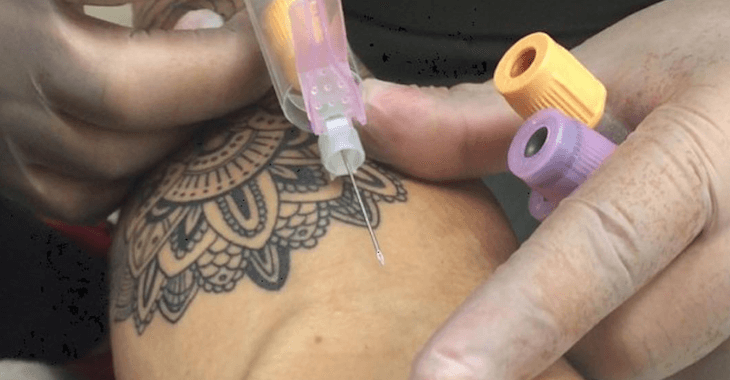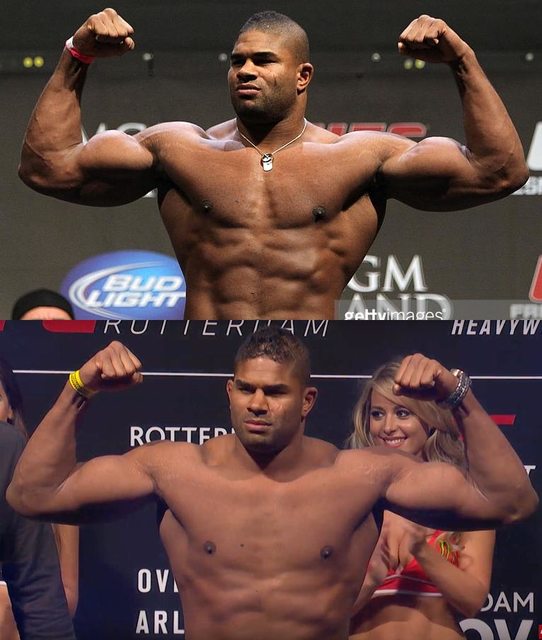Written by Derek Moody, June 28, 2016, at 6:01 a.m. Tweet to: @DerekMoody619
U.S. Anti Doping Agency (USADA) and the UFC partnered up last June to roll out the new anti-doping policy program. USADA CEO, Travis Tygart, made it very clear that if you’re cheating you’re going to get caught.
It seems as though some didn’t take him seriously as several athletes have already failed tests and received suspensions. Prior to USADA partnering up with the UFC, the UFC hired famed investigator Jeff Novitzky as their Vice President of Athlete Health and Performance.
Novitzky has dedicated his life to cleaning up multiple sports in the act of fairness. He is known for some high profile trials and investigations including: Barry Bonds, Roger Clemens, Lance Armstrong and Marion Jones.
The UFC finally has some peace of mind knowing that Novitzky and USADA will clean up the organization. In under a year, the UFC has already lead the way as the most legitimate organization/sport when it comes to anti-doping thoroughness.
The goal is to perform over 2,800 in and out of competition tests which would be equivalent to at least five tests per a fighter a year. In 2015, quarters three and four, USADA performed 115 In Competition tests and 238 Out of Competition tests totaling 353.
In 2016, quarter one has already surpassed 2015, 63 In Competition and 387 Out of Competition tests. 353 total in 2015 vs 450 just in quarter one of 2016. On USADA’s website, there is an updated list of prohibited substances to help fighters stay on top of what not to take. It is even advised that fighters ask USADA about any item they’re using that they may have doubts about.
Allegations
Lately the allegations of steroid use has surfaced more than ever in the mma world. Nate Diaz made heavy allegations before UFC 196 in regards to Conor McGregor using steroids. It appeared as more of a notion to raise the awareness in mixed martial arts. Anyone with internet at their disposal can access the USADA website to see how many times an athlete was tested.
For example, Conor McGregor was tested eight times in total during 2015. In 2016, he’s been tested five times and we’re only halfway through the year. Maybe those allegations raised a few eyebrows to test him more often. It also seems that the more you finish fighters the more often you’ll be tested. Which is why in 2015, Ronda Rousey and Conor McGregor were tested so often.
Fighters with a more chiseled physique may also encounter a bit more testing as fingers get pointed and eyebrows raise. A great example was how Alistair Overeem looked in 2011 compared to 2006 or 2016. 2011 was the year he failed a drug test which prevented him from fighting for the title at the time. It seems that past offenders stay under a microscope when it comes to testing.
Cris “Cyborg” Justino was tested three times in the forth quarter of last year after she signed with the UFC. She was on pace for being tested once a month this year as she was tested five times already. Hector Lombard was suspended for a year dating back to March 2015, since returning he was tested six times this year to keep him honest.
Failed USADA Tests
Here’s a list of fighters that have failed an USADA test within the UFC:
- Carlos Diego Ferreira (Ostarine)
- Viscardi Andrade (waiting for B sample testing results before announcing substance)
- Frank Mir (Turinabol)
- Yoel Romero (Ibutamoren)
- Felipe Olivieri (Methyltestosterone)
- Diego Brandao (Carboxy-THC)
- Gleison Tibau (EPO)
- Mirko Cro Cop (Admission of HGH usage)
- B.J. Penn (Intravenous infusion in excess of 50ml within 6 hour period)
- Chad Mendes (Growth Hormone Releasing Peptide 6)
- Tim Means (Ostarine)
- Lyoto Machida (7-Keto DHEA/ Androsterone)
- Islam Makhachev (Meldonium)
- Abdul Kerim Edilov (Meldonium)
A failed drug test for former UFC Heavyweight Champion Frank Mir more than likely means the end of his career. At the age of 37 with eight knockouts received, retiring while still healthy would be the best option. If he receives a two year ban, mounting a comeback at 39 in the heavyweight division wouldn’t be the smartest option.
Now if he only fought fifteen fights opposed to twenty-nine receiving maybe three or four knockouts then I’d be all for it buts that a hypothetical scenario. The reality is that he’s seen far more head trauma than someone in their late thirties should be enduring.
Mir is 2-6 in his last eight fights dropping out of the top 10 that he’s accustomed to. If the ban sticks I say it’s time to hang up, he’s nowhere near title contention at this point in his career.
Glitch In The Policy
It’s very concerning when an ingredient isn’t disclosed on the label and a fighter is flagged for a failed drug test as in the Tim Means incident. What’s also concerning is that he only used the product due to the listed ingredients not showing up on the USADA website and still having to accept a six-month suspension.
This isn’t the first time this has happened, Yoel Romero is another victim of this very awkward and scary scenario. Romero similar to Means had to also accept a reduced sanction suspension of six months.
I agree with 99.9 percent of what USADA is doing and trying to implement. I do feel if a supplement is contaminated there shouldn’t be a suspension unless the fighter has a history of failed tests. Although Means and Romero received six month suspensions, they could have received the maximum of two years for use of a contaminated product.
That’s the 0.1 percent that I disagree with but I’m sure that policy will be revised. Aside from that, USADA will continue to clean up the sport and maintain the legitimacy of the fighters.


